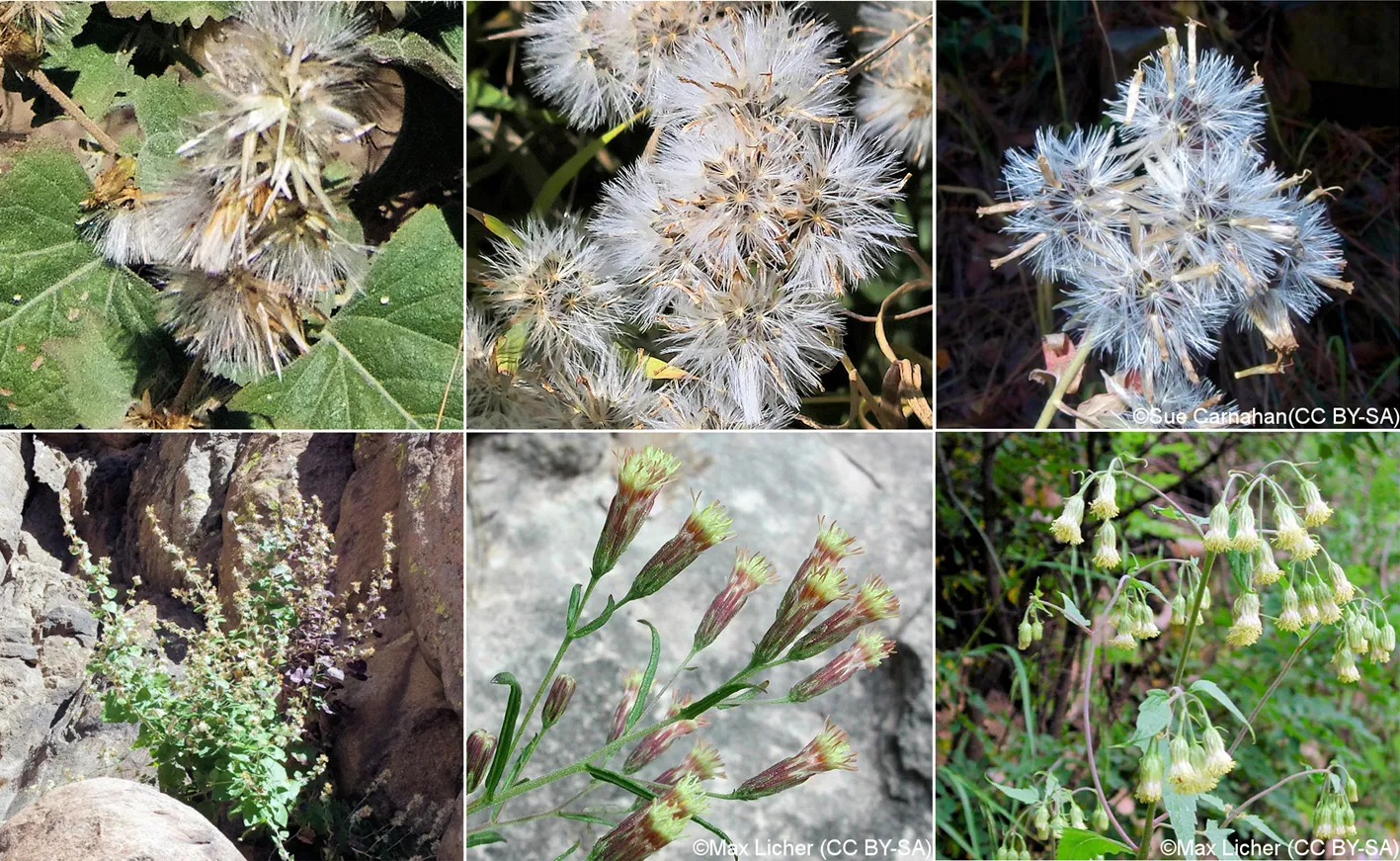By Tom Schweich
I think we tend to focus on the showy flowers of the plant world. And in fact, we have many showy native flowers around Golden. On the other hand, there are many plants that do not have showy flowers, though some have seed heads that can be showy.
We have three different species of Brickellia that grow around Golden. None of them have particularly showy flowers but they all have attractive seed heads. The genus Brickellia is name to honor Dr. John Brickell (1749-1809), an early naturalist and physician of Georgia who came to the United States in 1770 from Ireland.
On the left of the photo above is “California Brickellbush” — Brickellia californica (Torr. & A. Gray) A. Gray. Our plant is widely distributed around the western United States, and I first saw it in the Mojave Desert mountains of California. Around Golden, it is common at the cliff bases of North and South Table Mountains, although it has also found its own way into my garden. Dr. Asa Gray gave it the name californica even though he was describing a collection made by Agustus Fendler (1847) near the Mora River in New Mexico.
In the middle is “False Boneset” — Brickellia eupatorioides (L.) Shinners. Linnaeus (1763) knew of this plant from collections made in Pennsylvania. It is widely distributed around the United States except for the far west and New England. The name "false boneset" comes from the plant's similar appearance to the “boneset” plant — Eupatorium perfoliatum L. — that is found in the eastern United States. Our plant has been found in nearly every Golden open space. While it can be hard to see in the field, the seed heads are very showy, and the plant is easiest to find when it is in seed.
Finally, on the right is “Tasselflower Brickellbush” — Brickellia grandiflora (Hook.) Nutt. — named for its flowers than hang down like tassels. Around Golden, our plant is found in Apex Gulch and around its mouth at Heritage Square. In the United States, it is found from the Rocky Mountain Front Range to the west.









